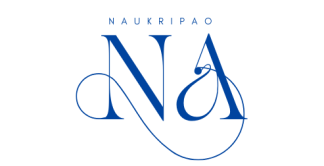
The Art of Crafting a Persuasive Sales Letter: A Comprehensive Guide
In the realm of marketing and sales, one of the most effective tools that businesses can utilize to reach potential customers and drive conversions is the sales letter. Whether you’re a new entrepreneur or a seasoned marketer, understanding how to write a compelling sales letter is crucial for success. This guide will delve into the definition of a sales letter and its significance in marketing. It will also provide a detailed sales letter format along with examples to help you create your own impactful sales letters.
What is a Sales Letter? Definition and Meaning
A sales letter is a written piece of communication aimed at convincing potential customers to purchase a product or service. It is a crucial marketing tool used by businesses to promote their offerings directly to clients. Unlike other forms of advertising, a sales letter allows businesses to engage with their audience on a personal level, highlighting how their product can solve specific problems or enhance their lives.
The meaning of a sales letter extends beyond just promoting a product; it also serves as a means to establish a connection with customers, build trust, and emphasize the unique value proposition of the product or service.
Importance of Sales Letters
Sales letters are highly effective because they:
- Offer Personalization: Sales letters can be tailored to address the specific needs or pain points of potential customers.
- Provide Detailed Information: They allow you to elaborate on the benefits and features of a product in a way that other forms of advertising cannot.
- Build Trust: By telling stories and sharing testimonials, sales letters can help establish credibility and trust with potential buyers.
Sales Letter Format: A Step-by-Step Guide
Writing a sales letter involves several key components that need to be structured properly to maximize its effectiveness. Here’s a step-by-step guide on how to craft a compelling sales letter using a proven format:
1. Introduction/Headline
The first part of your sales letter should capture the reader’s attention with an engaging headline. This is crucial for enticing them to read further.
Example:
“Unlock the Secret to Saving 30% on Your Energy Bills This Summer!”
2. Personalization
Start your letter by addressing the reader personally. If possible, use their name or identify a common interest they share.
Example:
“Dear Mr. Kumar, I noticed that you recently moved into a new home in Rohtak.”
3. Problem Identification
Highlight a problem or challenge that the reader might be facing. Ensure this aligns with the solution your product offers.
Example:
“As you settle into your new home, you’re probably worried about how to manage high electricity bills during the hot summer months.”
4. Solution Presentation
Introduce your product or service as the solution to the identified problem. Clearly explain how it works and its benefits.
Example:
“That’s where our new energy-efficient windows come in. Not only do they keep your home cooler during summer and warmer during winter, but they also reduce your reliance on air conditioning, saving you up to 30% on your energy bills.”
5. Features and Benefits
Provide specific details about the features of your product and translate these into benefits for the customer.
Example:
“Our windows are designed with double-glazing technology to minimize heat transfer, ensuring your home remains comfortable without the need for constant cooling. Plus, they are environmentally friendly and durable, lasting much longer than traditional window designs.”
6. Call to Action (CTA)
Include a clear and actionable CTA to prompt the reader to take the next step. This could be visiting a website, scheduling a consultation, or making a purchase.
Example:
“Don’t let high energy bills drain your wallet this summer. Order your new energy-efficient windows today and start saving immediately. Visit our website at [website URL] or call us at [phone number] to schedule a consultation.”
7. Guarantee and Risk-Free Trial (Optional)
Offering a guarantee or risk-free trial can alleviate any skepticism the reader might have about purchasing your product.
Example:
“Try our energy-efficient windows risk-free for 30 days. If you don’t see a significant reduction in your energy bills, we offer a full refund—no questions asked.”
8. Closing and Signature
End the letter with a professional closing and your signature. Ensure your contact information is prominently displayed.
Example:
“Thank you for considering our offer. We look forward to helping you enjoy a more energy-efficient home.
Best regards,
[Your Full Name]
[Your Company Name]
[Contact Information]”
Crafting a Persuasive Sales Letter: Tips and Strategies
To make your sales letter stand out and convert effectively, consider these additional strategies:
- Use Storytelling: People remember stories more than facts, so weave a narrative that connects your product to real-life scenarios.
- Social Proof: Include customer testimonials or reviews to demonstrate trustworthiness and satisfaction from existing customers.
- Urgency: Create a sense of urgency by offering limited-time discounts or promotions to encourage immediate action.
- Emotional Appeal: Appeal to the reader’s emotions by highlighting how your product can improve their quality of life or solve a pressing issue.
Conclusion
Writing a successful sales letter requires a blend of persuasive storytelling, clear communication, and strategic marketing. By following the outlined sales letter format and incorporating effective strategies, you can craft letters that resonate with your target audience and drive real sales results. Whether you’re marketing a new product or promoting a service, a well-crafted sales letter can be a powerful tool in achieving your marketing goals. So, start writing today and watch your sales soar!
